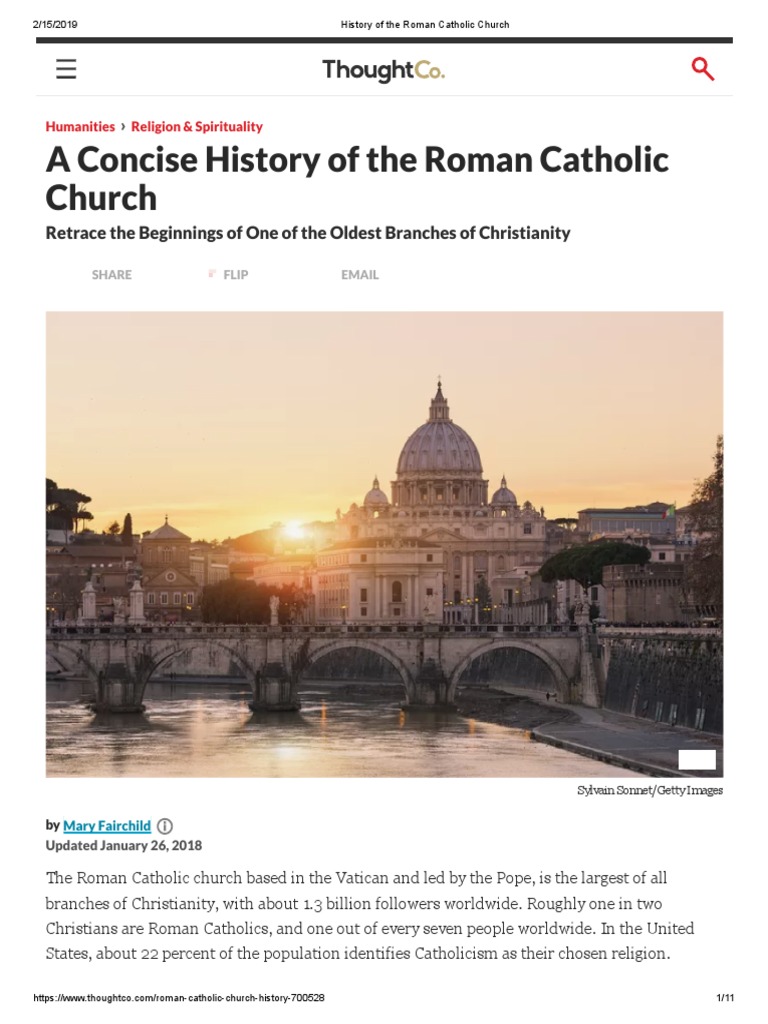The inception of the Roman Catholic Church is a matter of profound historical significance, intertwined with the very fabric of Christianity itself. Its origins can be traced back to the early Christian movement, which emerged in the first century A.D. This period, marked by the teachings of Jesus Christ and the subsequent evangelism by His apostles, laid the foundational stones upon which the Roman Catholic Church would eventually rise.
To begin with, Jesus Christ, the central figure of Christianity, was born in Palestine around 4 B.C. His ministry, which spanned roughly three years, focused on disseminating messages of repentance, love, and the Kingdom of God. Jesus gathered a small group of followers, known as disciples, whose lives would be irrevocably altered by His teachings and resurrection. After His crucifixion around A.D. 30, these disciples became the torchbearers of the faith, heralding the good news across the Roman Empire.
The term “Catholic,” derived from the Greek word *katholikos*, meaning “universal,” became pertinent during the formative years of the Church, particularly as it sought to define its identity and practices amidst a backdrop of diverse theological perspectives and emerging sects. Importantly, the early Christians worshipped in clandestine settings, often gathering in private homes due to the Roman authorities’ apprehension about this innovative religious movement. As such, their gatherings were characterized by shared meals, prayers, and the reading of scriptures, fostering a camaraderie that transcended socio-economic barriers.
In the decade following Jesus’ ascension, the apostle Peter emerged as a prominent leader among the disciples. According to Catholic tradition, Peter is regarded as the first Pope, establishing an unbroken line of papal succession that continues to this day. His crucifixion around A.D. 64 in Rome is emblematic of the Church’s initial persecution. This persecution was not merely a societal challenge but rather a crucible that forged a resolute commitment to the fledgling faith. The steadfastness of early Christians in the face of adversity fueled the rapid dissemination of Christianity across the Roman Empire.
By the end of the first century A.D., various Christian communities were flourishing throughout the Mediterranean. The epistles of Paul, which constitute a significant portion of the New Testament, served to address theological dilemmas and moral questions, providing guidance for these nascent congregations. The establishment of episcopal leadership, wherein bishops began to oversee and maintain doctrinal integrity among communities, was pivotal. This move toward centralized governance paralleled the growing complexities in the faith’s practice and doctrine.
The early 4th century marked a transformative epoch for Christianity. In A.D. 313, the Edict of Milan, promulgated by Emperor Constantine, legalized Christianity within the Roman Empire. This monumental decree not only ended persecution but also fostered the Church’s institutional development. Constantine himself adopted many Christian principles, further intertwining the fate of the Church with the Roman state. This relationship catalyzed the formalization of ecclesiastical structure and doctrine, enabling the consolidation of Christian beliefs and practices.
The First Council of Nicaea in A.D. 325 was pivotal. Convened by Constantine, this council sought to address the Arian controversy, which questioned the divinity of Jesus Christ. The Nicene Creed, formulated during this assembly, established a unifying foundation for the growing Church. This early ecumenical council highlighted the Church’s authority in theological matters, asserting its governance over defining orthodoxy. The growing clout of the Church was evident, as its bishops convened together to deliberate complex theological disputes, setting a precedent for future councils.
As the centuries unfolded, the Roman Catholic Church began to take on a more pronounced identity. It established itself as the theological, spiritual, and administrative authority for the western segment of Christendom. The sacramental system was developed, with the seven sacraments—Baptism, Confirmation, Eucharist, Penance, Anointing of the Sick, Holy Orders, and Matrimony—becoming integral to the life of the Church. This sacramental theology was rooted in the dual relationship between God and humanity, manifesting in communal worship and individual piety.
The Church of the Middle Ages, significantly shaped by the Great Schism of A.D. 1054, further delineated its identity from the Eastern Orthodox Church. This schism, characterized by theological, cultural, and political disputes, entrenched the authority of the papacy in the West while leading the Eastern Church towards a distinct trajectory. Consequently, the Roman Catholic Church asserted its position as a central institution in medieval Europe, influencing not only religious life but also political and economic structures.
The advent of the Protestant Reformation in the 16th century posed an existential challenge to the authority of the Roman Catholic Church. Key figures such as Martin Luther and John Calvin critiqued various practices and doctrines, advocating for a return to scriptural foundations. The Church’s response was the Counter-Reformation, a series of reforms initiated by the Council of Trent, which reaffirmed its doctrines while implementing significant reforms internally to address the objections raised.
In contemporary times, the Roman Catholic Church continues to be a vital and dynamic entity within global Christianity. Its historical foundations, intertwined with the evolution of Christian thought and practice, articulate a rich tapestry that spans nearly two millennia. Through its unwavering commitment to mission, its enduring theological tradition, and its vast array of sacramental practices, the Church remains a beacon of hope and faith for millions around the world.
In conclusion, tracing the historical foundations of the Roman Catholic Church invites one to appreciate its complex tapestry woven from the teachings of Christ, the perseverance of early believers, and the ongoing dialogue between faith and culture. Such a narrative not only elucidates the Church’s beginning but also enriches the understanding of its role within the broader Christian narrative today.



